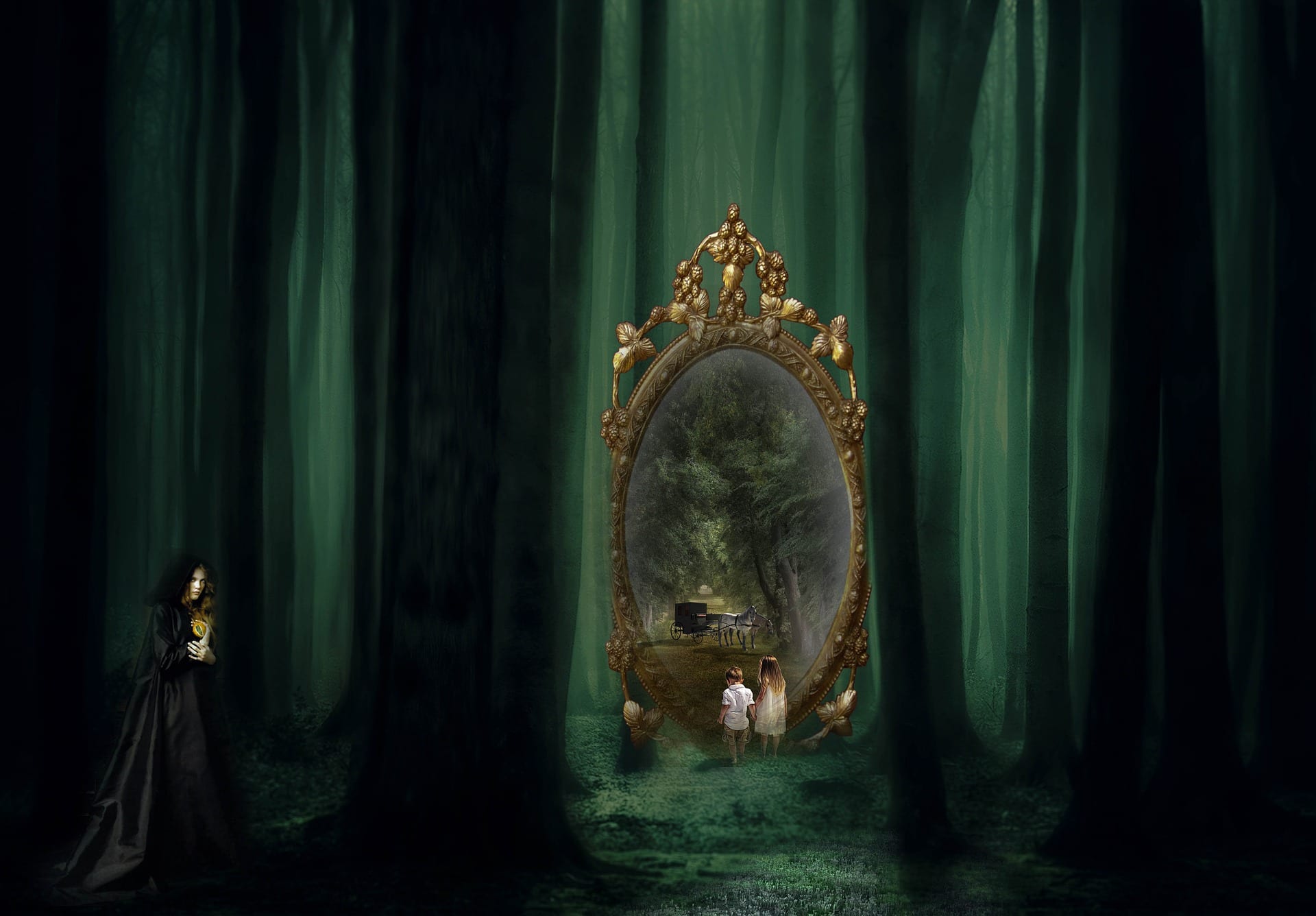

Since the beginning of time, we have looked up at the stars and wondered. Big questions came to mind; how was the world created, what is our place in the universe, are we alone in our struggles, can we improve our relationships? We told stories around a fire to share our concerns, visitors recounted theirs, and we passed them down to our children. Thus, the many threads of human experience were woven into a vast tapestry of wisdom that includes psychological processes, instinctual responses and behaviour patterns.
Fairy tales begin with Once Upon a Time, and transport us to a timeless NOW, where universal themes are expressed through the language of metaphor and paradox. Truth emerges out of this sacred, imaginative space, where past, present and future exist in a fluid continuum.
Our favourite fairy tale explores who we are, from the soul’s perspective, and illustrates the obstacles we might encounter, within ourselves and with others. It starts by describing our circumstances, plots down the turns and twists of our trajectory and proceeds to show us how we can restore, or not, a new world order. They help us to understand that we can act or think differently and how to ask the right questions.
We might recall Sleeping Beauty, enclosed within the walls of a castle, surrounded by a wilderness of prickly thorns stretching out to prevent anything or anyone from wandering in. This abandoned realm hides the hollow places that crave love and attention. Deep inside, beyond the halls, the vast chambers, down the long corridors, we might discover a child, oblivious to his environment, a young, lost, aspect of ourselves, curled up after a traumatic experience, unaware of the world she was once part of. If we don’t have the strength to endure the suffering, a trance spreads itself over memory and we will mercifully forget. This suggests addiction or any compulsive behaviour with rituals aimed at dulling the anguish. With this forgetting, a great price is exacted, we are not present, not wholly embodied. Consciousness cannot penetrate the fortress and awaken what is perhaps a precious and exiled quality. We need to face the anxiety, the pain of our neglected soul.
When we identify with the hero in the story, we come to understand that we are not alone. His struggle points us to the underworld of our fears, of our abandoned hopes. A vital bridge between the past and the present opens up, without it, we feel rootless and confused. As wounds heal, we find meaning in our journey. A narrative emerges that offers us a sense of continuity, moving us toward unforeseen possibilities. We come to understand that life is a constant process of change, the old must make space for the new, and with each step, we gain self-knowledge and acceptance.
Exploring the wisdom of fairy tales is like going through a box of photographs, we linger over one, laugh at another and feel nostalgic at the third, as different motifs surface. In the Snow-Queen, we realize that a little icicle lodged in the eye makes us numb and insensitive to our needs and to the needs of others. In Tom Thumb, we may tune into the instinctive guidance offered by the animals that cross our path. We rejoice at how savvy he is at tracking down his way home, dropping pebbles to mark the road out of the forest. In Snow White, we explore the difficult pattern of growing up with a narcissistic parent; face the curse of the wicked witch, an energy that blinds us until we can meet it in ourselves. And we discover how, we too, can find the love we craved as a child.
For a comprehensive introduction to Fairy Tales in Jungian Psychology, explore James Hollis‘ A Jungian Perspective on Fairy Tales. Here Hollis turns a Jungian lens on fairy tales, connecting a myriad of Jungian concepts and ideas while bringing to new life 10 jewels from the world of fairytales. Learn more here.
We also offer another wonderful course Fairy Tales, where 5 outstanding Jungian teachers talk about one fairy tale each. Here, you will not only learn several specific fairy tales with their unique underlying symbolic forms, but also suggestions from each teacher on how to work with fairy tales in general. Learn more here.

Dariane Pictet
Dariane is a Jungian Analyst born in Geneva, Switzerland. She attended Drama School in Paris, worked as a Poetry Editor then trained as a Psychotherapist.
More Posts by Dariane Pictet